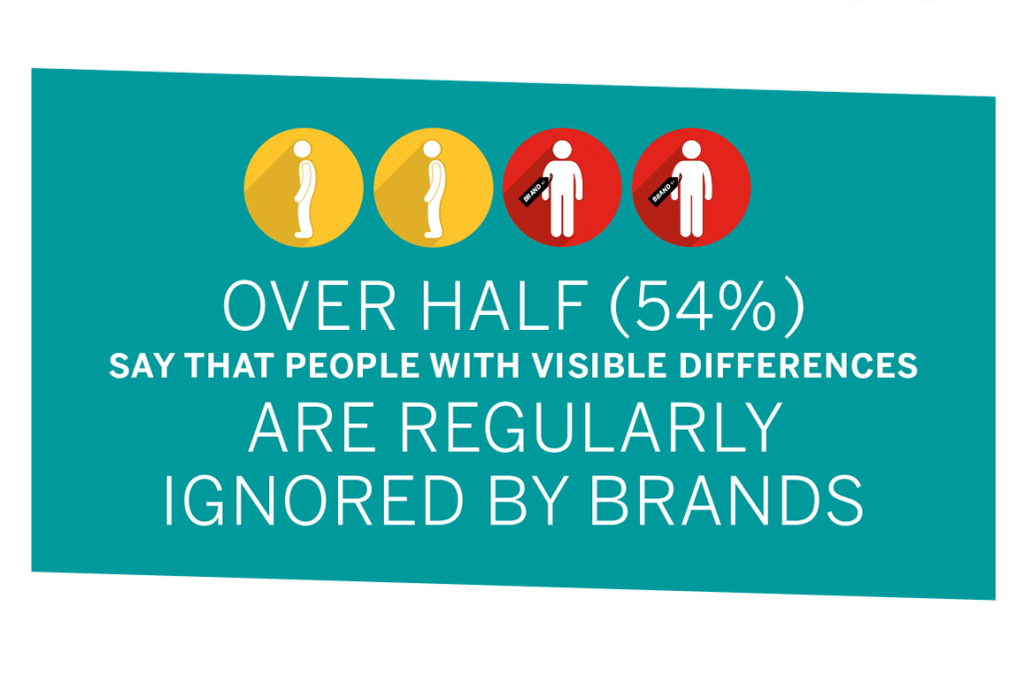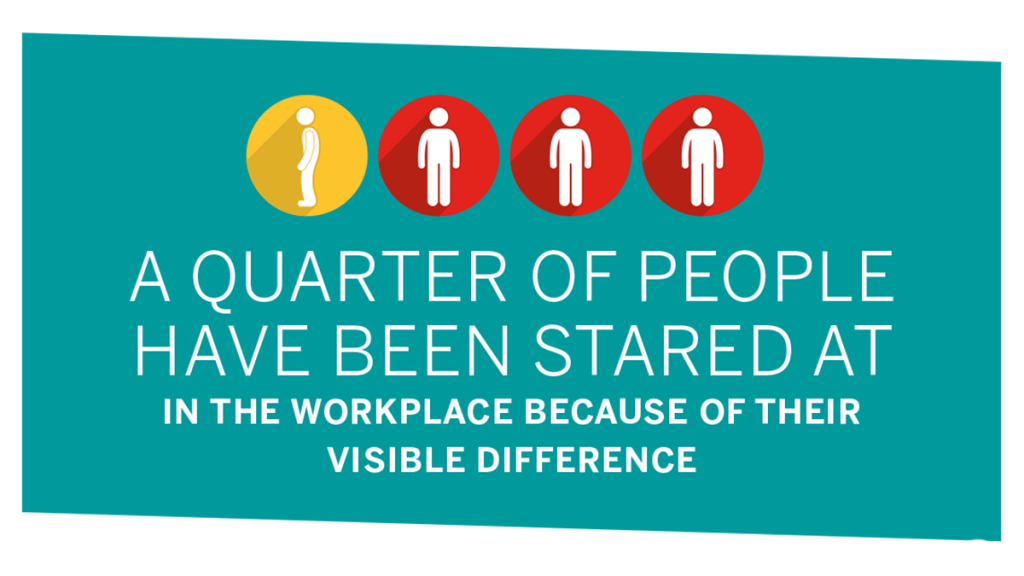Visible difference and diversity in the workplace.
We provide guidance on how to embed diversity and develop an inclusive environment for everyone, including those with a visible difference
Unconscious bias training can help prevent your team from making assumptions about people with visible differences.
Unconscious bias, or implicit bias, is a term used to describe associations which are outside our conscious awareness.
Unconscious bias, including towards people with visible difference, can have a damaging effect within the workplace, influencing decisions in recruitment, career progression and performance management.
However, unconscious bias training can help you and your team recognise and overcome these assumptions and create a more inclusive workplace. On this page, we explore unconscious bias and its impacts.
Start by watching this video:
As you can see from the video, unconscious bias describes the unintended preferences we may have towards certain people based on the associations we have with their characteristics.
Unconscious bias means that we automatically respond to others based on their gender, ethnicity, disability or visible difference in positive or negative ways. This is the result of many external influences formed by our socialisation and experiences, including:
For example, if we get used to seeing lots of female primary school teachers or male plumbers, we may assume that these are inherently male or female jobs.
People may have unconscious biases about visible difference too. For example, we may be used to seeing protagonists and villains in TV and film look a particular way, and therefore unconsciously assume someone is good or bad based on their appearance. Or we may simply be less likely to seek bonds with people who are noticeably different from ourselves. In the video, this is referred to as affinity bias.
“Brands need to authentically embrace people who look different and include them in the conversation. I would like to see more understanding of visible differences and how people deal with conditions that constantly change the way they look. I want a world where people appreciate all kinds of beauty, not the narrow version of beauty we have now.”
The brain is continually taking decisions to keep us safe and healthy. The same processes which lead to unconscious bias also enable us to make life-and-death choices without consciously thinking. For example, we leap out of the way of a speeding car automatically. But some decisions we make more slowly – such as taking the time to judge when it’s safest to cross the road.
Without the ability to make snap-decisions below the level of conscious thought, we wouldn’t be able to do anything. Our tiniest action would need careful thought before we could do it.
This mechanism, which keeps us safe, healthy and able to function, also leads to unconscious bias. We make quick and unfounded assumptions about people based on superficial and irrelevant differences. Once we understand our own biases we can challenge and overcome them.
These unconscious associations are difficult to override, regardless of whether we recognise them to be wrong, because they are deeply ingrained in our thinking and emotions. Regardless of how fair-minded and inclusive we believe ourselves to be, most people have some degree of unconscious bias. That’s OK – the important thing is that we take steps to recognise and address it in ourselves and – as employers – within our workforce. Educating yourself and your workforce through unconscious bias training is a good first step.
When an organisation is biased against certain groups, whether consciously or unconsciously, it means that it only employs “people like us”. Not only is this bad for society, it is also bad business. Numerous studies show that diversity increases profits and produce better financial and social outcomes.
Unconscious bias within the workplace can also make employees less likely to associate with people who appear to be different from themselves, which can result in some people being left out professionally and socially in the workplace.
This can have a detrimental impact on people with a visible difference. It could also be discriminatory when the unconscious bias relates to a protected characteristic such as the legal category of “severe disfigurement”, which covers some people with visible difference. Unconscious bias training can help you and your team address hurtful, damaging and discriminatory attitudes and actions in your workplace.

As employers, when we see someone who looks different due to a health condition that affects their appearance, we can make unfounded judgements about them. This can include:
As human beings, unconscious bias is something that we can’t control. However, we can control how we behave and the conscious decisions we make about someone who looks different. Unconscious bias training helps us recognise our own biases so that we make judgments about people based on their qualifications, experience and behaviour instead of their appearance.

Ask where your own unconscious bias comes from. Reflect on whether you may have an unconscious bias towards people with a visible difference.
Take a look at this video, called “I am not your villain”:
Are our unconscious biases towards people who look different based on fact or personal experience? Or could they develop because the media often portray bad or evil characters as having a visible difference? Once you start thinking how people with a visible difference are often portrayed, you can begin to understand why you may have an unconscious bias.
Simply being aware of our own biases can help us overcome them and see them as unfounded.
First, take a look at this video, concentrating on the portion from 2’26” onwards:
Try to adopt the four approaches suggested in the video:
Reward yourself for noticing unconscious bias to help embed new thought processes.
Use images of people with a visible difference in your advertising and corporate communications. This will help make visible difference more familiar to your employees, customers and ultimately the general public. This in turn will help build a culture where visible difference is less noticeable in real life, and in which people with visible difference do not face marginalisation, discrimination and abuse.
Ensure recruitment practices are fair so that your workplace is welcoming to people with a visible difference. This will help you build a more diverse workforce.
Explore ways of making the workplace more diverse – and also more welcome to diversity. Embed diversity in the workplace to create a more inclusive culture.
We hope you find this resource useful. However, in-person unconscious bias training will make this subject more tangible and accessible to your workforce.
We provide guidance on how to embed diversity and develop an inclusive environment for everyone, including those with a visible difference
We discuss what you can do to make sure you’re recruiting fairly and how to avoid discriminating against an applicant with a visible difference.